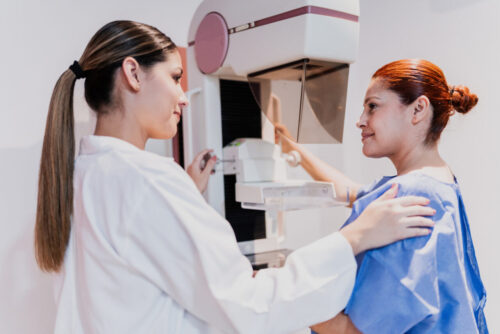
MediaNews Group/Boston Herald, Getty Images
Above: Jim O'Connell conversing with one of his patients
Boston's pioneer in street medicine weighs in on street doctors' origins in the city and providing health and community care to people experiencing homelessness.
Street homelessness is a particular subset of the experience of homelessness — individuals seek shelter in deserted parks, empty doorways, train terminals, and underneath bridges. These are usually individuals who do not feel welcomed by traditional homeless shelters made available to people with housing instability. The medical and social needs of this particular subset of people experiencing homelessness are dire. Many of these individuals feel marginalized by traditional medical centers with four walls and a waiting room and have long foregone medical treatment, despite having some of the most complex medical needs. This pressing issue is how the concept of street medicine and street doctors was born.
Street medicine’s roots in Boston
Jim O’Connell, MD, co-founder and president of Boston Health Care for the Homeless Program and a member of the faculty at Boston University Chobanian & Avedisian School of Medicine, has been a “street doctor” in Boston for nearly 38 years. Though there are many different ways that a street doctor can work, he explains, there’s one central concept.
“At its heart, a street doctor is a physician, nurse practitioner, or physician assistant who will go directly to the streets to care for people without waiting for them to come to us,” O’Connell says.
He distinguishes a street doctor from clinicians caring for those in shelter settings, which he instead calls “homeless health care medicine.” Instead, street doctors are truly going to where people are living beyond four walls, traveling by foot, bike or van to meet patients where they live.
“At its heart, a street doctor is a physician, nurse practitioner, or physician assistant who will go directly to the streets to care for people without waiting for them to come to us.”
“Homelessness is out in the open, but the lives and stories of the individuals are pretty hidden from us,” says O’Connell. “We have learned, to our dismay, that the mortality rates of people who live on the streets of Boston are 10 to 12 times higher than a person of the same age living in a home.”

Boston Health Care for the Homeless outreach worker Sharon Morrison helps a patient experiencing homelessness. Photo credit: Darren McCollester, Getty Images
Boston’s first real exercise with street medicine was during the winter of 1985 and 1986 when O’Connell and others realized that the vast majority of deaths were among people who stayed outside and did not come into shelter. This was coupled with a tuberculosis outbreak, a disease that requires a complex medical regimen that asks individuals to show up daily for their medications. Knowing that people experiencing homelessness often face challenges simply getting to a clinic, O’Connell and other clinicians and staff at the Pine Street Inn as well as the former Boston City Hospital (which merged with BU Medical Center Hospital to create Boston Medical Center), hopped on bicycles or walked the streets of Boston looking for their patients to dole out medication.
The future of street doctors and street medicine
O’Connell says that the critical components of practicing street medicine are consistency, continuity of care, and reciprocity. He tells a story of the early days of street medicine in Boston when the Pine Street Inn van was just starting. Initially, he and another street doctor would ride in a medical van to check in on people living outside in the night to ensure they were okay. But he quickly saw how that didn’t meet the needs of the people they were trying to care for.
“One vocal patient of ours queried: ‘How would you like it if your doctor arrived uninvited in your bedroom in the middle of the night shining a bright flashlight in your eyes?'” So, the team adapted. They still rode in the van, but instead of leading with a flashlight and questions about medical history, they led with sandwiches, coffee, soup, blankets, and friendly faces, and, as requested, they shone the flashlight on their own faces.
“Living on the streets makes you very vulnerable, despite the fact that we’re surrounded by some of the world’s most prominent hospitals.”
Street doctor teams across the country may not have the same defined structure and longevity as the team in Boston, which is one of the first medical street team programs in the country. They also may not have the same cooperation and support from local homeless shelters, including the Pine Street Inn, and the city and state governments. While other street medicine programs across the country are less formal or volunteer-based, O’Connell specifically mentions Pittsburgh as having another model street doctor presence under the advisership of Jim Withers, a physician in Pittsburgh who, like O’Connell, has dedicated his career to street medicine. The street medicine program Withers founded — Operation Safety Net — has been around for about 30 years, and, like BHCHP, offers on-the ground care to individuals experiencing homelessness and living outside.


